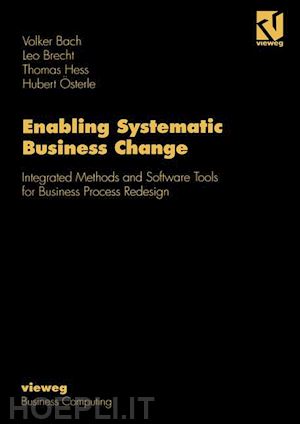An increasing number of companies regard Business Process Redesign (BPR) as a significant means of improving their competitive position. The initial euphoria is being superseded by a more pragmatic assessment. This book demonstrates how a systematic, practical yet creative procedure can lead to more reliably successful BPR projects. Case studies and investigations support the superiority of a systematic, method-based approach as opposed to an "intuitive" one.Consequently, before the start of a project a method must be selected which corresponds to the strategic goals of the project and is suited to the company environment. This book formulates the central principles and criteria for this, which are derived from practical experience. A procedural model and checklists help the reader to define what he requires from the method. From these criteria are then derived suitable BPR tools. Of particular importance here is the underlying cost-benefit analysis.The book describes over a dozen BPR methods and as many tools within a uniform framework. This ensures comparability and allows correlation with project-specific requirements. Particular attention is paid to method-tool combinations that are designed for combined use.Immer mehr Unternehmen sehen im Business Process Redesign (BPR) ein wesentliches Mittel, ihre Wettbewerbsfähigkeit zu steigern. Die anfängliche Euphorie weicht heute einer sachlicheren Betrachtung. Das Buch zeigt auf, warum ein systematisches, ingenieurmäßiges, aber gleichzeitig kreatives Vorgehen sicherer zu erfolgreichen BPR-Projekten führt.Fallstudien und empirische Untersuchungen untermauern die Überlegenheit des systematischen, methodisch unterstützten gegenüber dem "intuitiven" Ansatz. Dementsprechend ist vor Projektbeginn eine Methode auszuwählen, die der strategischen Zielsetzung des Projekts entspricht und in das Unternehmensumfeld paßt. Das Buch formuliert dafür die zentralen, aus der Praxis abgeleiteten Grundsätze und Kriterien. Ein Vorgehensmodel











